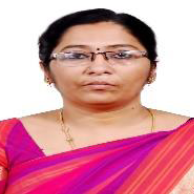
Srilakshmi A.
Work place: SASTRA Deemed to be University, Thanjavur, India
E-mail: srilakshmi@cse.sastra.ac.in
Website: https://orcid.org/0000-0001-7639-6863
Research Interests:
Biography
A. srilakshmi working in sastra deemed to be university in the department of computer science. Her research area is deep learning with image processing. Attended conference and workshops related to deep learning. She has more than 11 years of teaching experience and 2 years if industry experience. She is an enthusiastic, self-motivated, reliable, responsible and hard-working person. Currently she has also started working in IoT with deep learning to improve the technical skills.
Author Articles
A Novel Local Adaptive Percentage Split Distribution Method for Image Binarization and Classification
By Joy Christy A. Umamakeswari A. Shanthi P. Srilakshmi A. Siva Chandrasekaran
DOI: https://doi.org/10.5815/ijigsp.2025.02.02, Pub. Date: 8 Apr. 2025
Binary thresholding methods separate image pixels into two groups as 0s or 1s. The two types of binary thresholding methods are global thresholding and local thresholding. Global thresholding methods are appropriate for binarizing the images that has smooth and contrast distribution of pixels. The performance of global thresholding struggles with distorted and tampered images as it introduces additional noise and causes variation in contrast and illumination. Local adaptive thresholding methods address the issue with every pixel a threshold based on the contrast distribution of neighboring pixels. This paper introduces Local Adaptive Percentage Split Distribution (LAPSD) method for binarization. LAPSD computes threshold based on percentage wise split of neighboring pixels. The performance of LAPSD is compared with benchmark binary thresholding methods such Bradley’s, Niblack’s, and Sauvola’s against PSNR, SSIM and MSE metrics. The accuracy of LAPSD image binarization is measured using Convolution Neural Network (CNN) models and the results prove that the performance of the proposed method surpasses traditional methods in all means.
[...] Read more.Other Articles
Subscribe to receive issue release notifications and newsletters from MECS Press journals